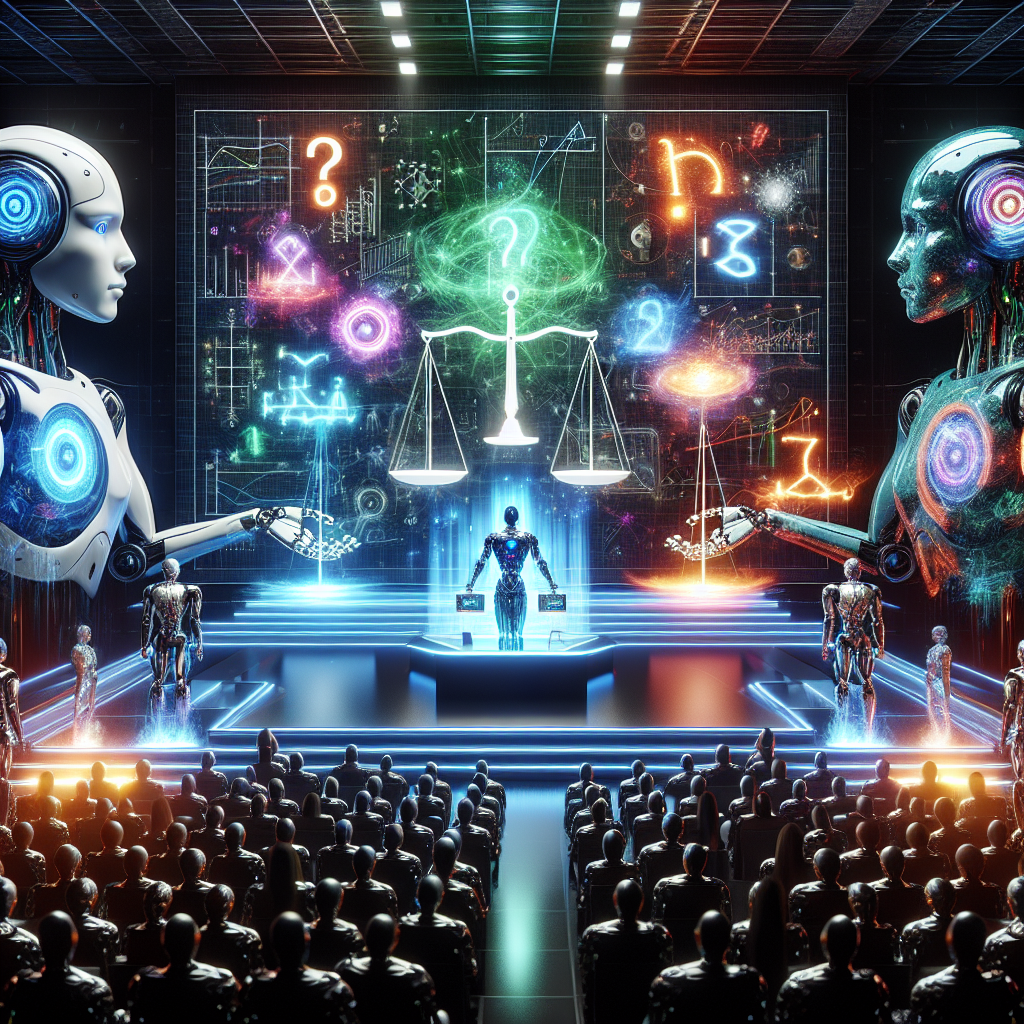AI Giants Compete in Math Challenge: OpenAI and Google Excel, But Dispute Results
In a compelling intersection of artificial intelligence and academic rigor, both OpenAI and Google have recently announced impressive performances in a high-stakes math competition designed to test algorithmic reasoning and mathematical problem-solving. While both tech titans achieved groundbreaking scores in the competition, their claims sparked controversy—not over who scored higher, but over the validity of each other’s scoring methodologies. The incident casts light not only on the capabilities of today’s most advanced AI but also on the critical importance of benchmarking, transparency, and validation when evaluating complex models.
The Competition: A New Frontier in Machine Reasoning
Advancing Beyond Conventional Benchmarks
This particular math competition was no ordinary test—it was tailored to challenge artificial intelligence systems with Olympiad-style mathematical problems that demand more than rote computation. These problems required understanding, abstraction, and strategic problem solving—traits long considered high water marks in AI development. The test settings included algebra, geometry, number theory, and combinatorics, closely mirroring questions posed in nationwide and international math competitions.
For years, AI has demonstrated excellence in pattern recognition tasks such as image classification, natural language processing, and board games like Go and chess. Yet higher mathematics presents a unique challenge by requiring symbolic reasoning, logical proof construction, and abstract thinking—areas where human intuition often outpaces machine logic.
Head-to-Head: OpenAI vs. Google
OpenAI’s Performance
OpenAI deployed GPT-4-based technology fine-tuned specifically for formal mathematical reasoning. By incorporating chain-of-thought prompting and structured training on formal proofs, OpenAI’s model successfully solved a majority of the test’s hardest problems. The lab claimed its model correctly answered over 80% of the competition questions, outperforming previous benchmarks significantly.
Google DeepMind’s Approach
Google entered the competition with Minerva, an AI model also enhanced for complex problem-solving via detailed solution paths and robust pretraining on mathematics literature. Google reported slightly higher accuracy on certain problem types, boasting a model that not only solved math problems but also demonstrated the process through LaTeX-formatted explanations. Their internal scoring reckoned that Minerva outperformed OpenAI’s model on some fronts, particularly in geometric reasoning.
Disputes Over Evaluation Metrics
The Scoring Debate
While both companies earned praise for pioneering advancements, tension arose when each questioned the other’s scoring methodology. OpenAI reportedly critiqued Google’s manual validation of model-generated answers, claiming it introduced potential bias by allowing human reviewers to interpret incomplete or ambiguous responses as “correct.” Google, in turn, questioned the reproducibility and consistency of OpenAI’s benchmarks, focusing on discrepancies in datasets and problem framing.
These disagreements spotlight how evaluating AI in open-ended domains like math is inherently complex. Unlike multiple choice exams, open-response math problems must be evaluated for method, correctness, and clarity—all variables susceptible to inconsistent judgment.
Why Standardization Matters
This episode serves as a powerful reminder of the need for external, standardized benchmarks in AI development. Just as the federal government enforces standardized procurement and evaluation criteria for competitive solicitations, the AI community must align around transparent, reproducible testing environments. The credibility of artificial intelligence in sectors like academic research, defense contracting, and government procurement hinges on the validity and comparability of its performance metrics.
Implications for Government and Industry
Advancing Public Sector Applications
The growth of AI in solving complex analytical problems has far-reaching implications for public sector project management and government contracting. From automated auditing to resource allocation modeling, the capability of AI to perform high-level mathematics opens doors to new efficiencies and insights.
However, disputes like the one between OpenAI and Google underline a persistent concern among government agencies—data integrity and model explainability. Public entities such as the Department of Defense, the National Science Foundation, and state-level procurement offices in Maryland require not only performance but also transparency, reproducibility, and accountability from their AI partners.
Preparing Contracting Officers and Project Managers
For contracting officers and project managers navigating government AI procurement, this episode serves as a case study in the importance of due diligence. Vendors must be required to submit clear evaluation protocols, demonstrate third-party validation when possible, and adhere to ethical AI principles. Including scoring methodology in technical proposals will soon become a best practice—one that reduces ambiguity and builds trust.
Conclusion
The math competition between OpenAI and Google illustrates both the astounding potential and the pressing challenges in modern artificial intelligence. While both companies showcased exceptional breakthroughs in machine reasoning, their conflict over scoring methods underscores the vital need for standardized benchmarks and transparent evaluations. As federal and state agencies increasingly explore AI for mission-critical applications, the lessons from this academic AI duel will resonate widely—factoring#AIChallenge #MathAI #OpenAIvsGoogle #AIEthics #BenchmarkingAI

